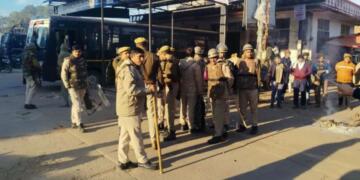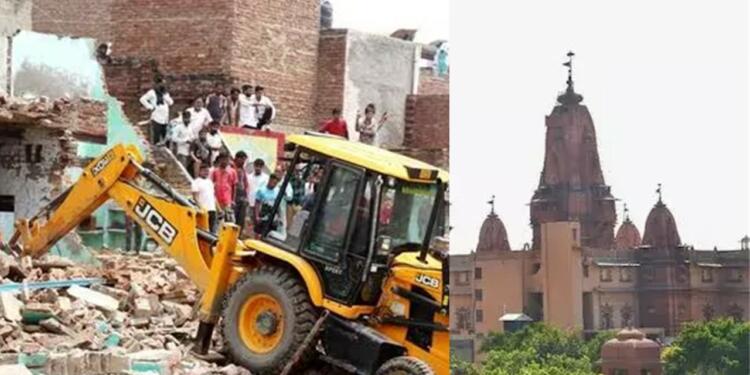In a resolute display of action, the Agra Railways authorities of the Indian Railways, in collaboration with local law enforcement and administration, embarked on a sweeping mission to eliminate unauthorized encroachments in the vicinity of Shri Krishna Janmbhoomi in Mathura. This audacious move comes following a proactive notice issued by the Railway administration, calling on the inhabitants of the Nayi Basti area to promptly vacate the government land.
The focal point of this endeavor is rooted in a larger vision – the transformation of the existing meter gauge railway track into a broad-gauge track, paving the way for an integral railway connection between Mathura and Vrindavan. The expansiveness of this plan necessitated the removal of encroachments obstructing this transformative development.
The backdrop to this bold action is a month-old notice, clearly articulating the Railway administration’s intent to reclaim the land. The Railways assert that the land upon which Nayi Basti’s houses have been illicitly constructed is the property of the Railway Board. The urgency of the situation has been accentuated by the impending requirement for the construction of a specialized rail line, further underscoring the significance of immediate land evacuation.
While the administration maintains that this proactive demolition is the outcome of a prior notification, a different narrative emerges from some Nayi Basti residents. In their perspective, the clearance measures have generated an atmosphere of unease, characterized by sentiments of panic and fear. These residents contend that they have legitimately acquired the properties and are now confronted with the disheartening prospect of being uprooted from their own land.
Also read: Now Haryana govt. applies the UP model for Nuh terrorists
Amidst the varying perspectives, an influential voice rises in support of the demolition drive. Members of the Sri Krishna Janmbhoomi Seva Sansthan express their endorsement for the endeavor, asserting that the clearance of unauthorized encroachments along the railway track has transpired through due legal process.
The intricate tapestry of this scenario does not exist in isolation. It converges with the broader context of encroachments impinging upon sacred spaces. The Shahi Eidgah mosque, standing as a contested encroachment with numerous petitions before the Allahabad High Court seeking its removal from the very land that once hosted a temple, shares parallels with the encroachments along the railway track.
Gopeshwar Chaturvedi, representing the Sri Krishna Janmbhoomi Seva Sansthan, draws an interesting connection between these occurrences. He remarks, “Today, these encroachments alongside the railway track have been removed through due legal process. In the future, we may witness the removal of the Shahi Eidgah mosque as well.” Chaturvedi’s statement encapsulates the intricate interplay of legal procedure, public sentiment, and the endeavor to reclaim sacred spaces from encroachment.
In the intricate mosaic of this unfolding narrative, the dynamics of legality, emotion, and historicity converge. The endeavor to extricate Shri Krishna Janmbhoomi from the grasp of unauthorized encroachments mirrors a broader quest to restore sanctity to sacred sites. As the echoes of history reverberate through these evictions, the nation watches with bated breath, anticipating the resolution of conflicts that are not only spatial but also deeply intertwined with the fabric of collective memory and faith.
Support TFI:
Support us to strengthen the ‘Right’ ideology of cultural nationalism by purchasing the best quality garments from TFI-STORE.COM






























